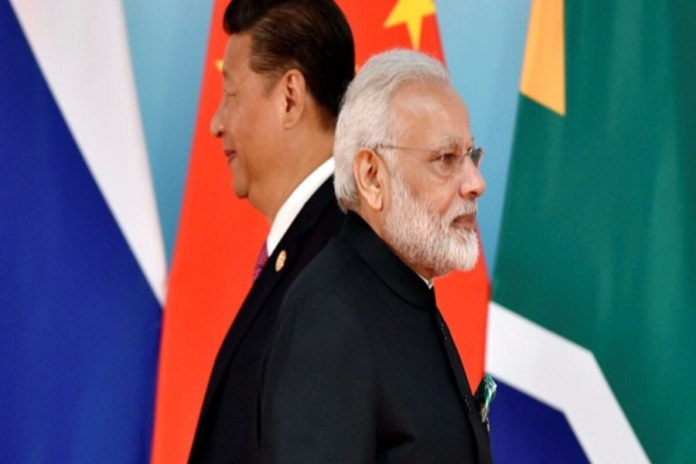Sino-Soviet relations deteriorated in the middle of the 1960s as a result of China’s propensity to pick battles with nearly all of its neighbours. Due to its close ties to the Soviet Union, India was able to independently develop the MiG-21 fighter jet and introduced the production line for it.
In the 1970s, China struggled to mass-produce the J-7 fighter jet, a MiG-21 duplicate, and instead depended on the J-6, a MiG-19 replica. In contrast, more than 200 MiG-21s were in service with the Indian Air Force (IAF).
At that time, the Indian Air Force (IAF) had superior aerial and electronic capabilities than China. Prior to the 1990s, the Chinese Air Force had no advantage over the Indian Air Force (IAF) in the airspace over Tibet, making it challenging for China to launch an offensive or adequately defend against attacks.
The technological difference between the Chinese air force and the Indian Air Force (IAF) in the 1980s significantly jeopardised China’s offensive and defensive capabilities. The French Mirage 2000, the MiG-23, and other cutting-edge combat aircraft were all available to the Indian Air Force (IAF). The majority of Indian aircraft had limited capabilities for air warfare beyond visual range and were comparable to fourth-generation fighters.
The Chinese Air Force, on the other hand, mainly relied on fighter aircraft like the J-6, J-7, and J-8. The most advanced Chinese J-8 fighter aircraft, a second-generation aircraft, is far more technologically advanced than the fighter jets used by the Indian Air Force (IAF). The Chinese Air Force found it more difficult to begin offensive operations against the Indian Air Force (IAF) after India introduced the MiG-29 fighter jet in 1986. At the time, the Pakistan Air Force’s F-16s forced the Indian Air Force (IAF) to compete with superior US military technology.
The Chinese Air Force deployed fighter aircraft directed by ground radar for interception and coordinated with anti-aircraft artillery batteries for air defence in reaction to the Indian Air Force’s superiority in Tibetan airspace. As the Indian Air Force (IAF) modernised its fleet of fighter planes, Chinese techniques were rendered ineffective.
Following India’s introduction of fighter aircraft with beyond-visual-range combat and close-quarters dogfighting capabilities, such as the MiG-29, the Chinese Air Force and anti-aircraft artillery troops in the Tibetan region faced significant defensive pressure and security hazards.
Modern fighter jets like the MiG-29 considerably enhanced the danger of Indian Air Force missions in Tibetan airspace. Due to its wide combat area and high level of agility, this fighter jet possessed powerful aerial combat abilities. The Chinese Air Force was compelled to modify its air defence strategies and combat plans in order to take the new fighter plane generation into consideration.
For the Chinese Air Force to properly combat this threat and swiftly gather knowledge on the Indian Air Force’s (IAF) activities, it required superior radar monitoring and early warning capabilities. The Chinese Air Force also required an update to its anti-aircraft missile systems in order to ensure the security of Chinese airspace above Tibet.
The Chinese Air Force launched a policy of continuous technological innovation and modernization adjustments to catch up to the Indian Air Force (IAF) in terms of technology. The Chinese Air Force’s combat power and operational capabilities were greatly increased as time went on thanks to the acquisition of more sophisticated fighter jets like the J-10 and J-11 (a Chinese-built version of the Russian Su-27).
China’s national strength significantly increased in the 1990s along with the country’s reform and opening up. Military technology advanced significantly at this time, greatly improving Chinese Air Force combat capabilities. Russia restarted military trade with China after the dissolution of the Soviet Union and offered China powerful Su-27 fighter fighters out of concern for the country’s deteriorating economy.
Since the Chinese Air Force began using the Su-27 fighter jet in 1992, it has steadily acquired capabilities that are on par with those of the Indian Air Force (IAF). In the 2000s, the Indian Air Force began mass building Su-30 MKIs.
Additionally, China purchased Su-35s and SU-30 MKKs and began building Su-27 derivatives. The Chinese Air Force has developed a number of cutting-edge fighter aircraft, including the J-20 and J-16 (which is a variation of the J-11, a replica of the Soviet Su-27).
The Indian Air Force (IAF) has upgraded its current fighters, including the Mirage 2000 and Su-30MKI, and introduced the French 4.5 generation Rafale fighter equipped with Meteor BVR missiles in order to preserve its combat superiority against the Chinese Air Force.
Because their aircraft can only take off partially laden from the air bases on the Tibetan plateau, the Chinese are still at a disadvantage and must utilise refuelers to go great distances to refuel. Chinese air defence still relies on a strong system of radars and other devices. UAVs have been used in large numbers, giving them a competitive advantage that can offset the inability of aeroplanes in Tibetan airspace to take off fully loaded.



